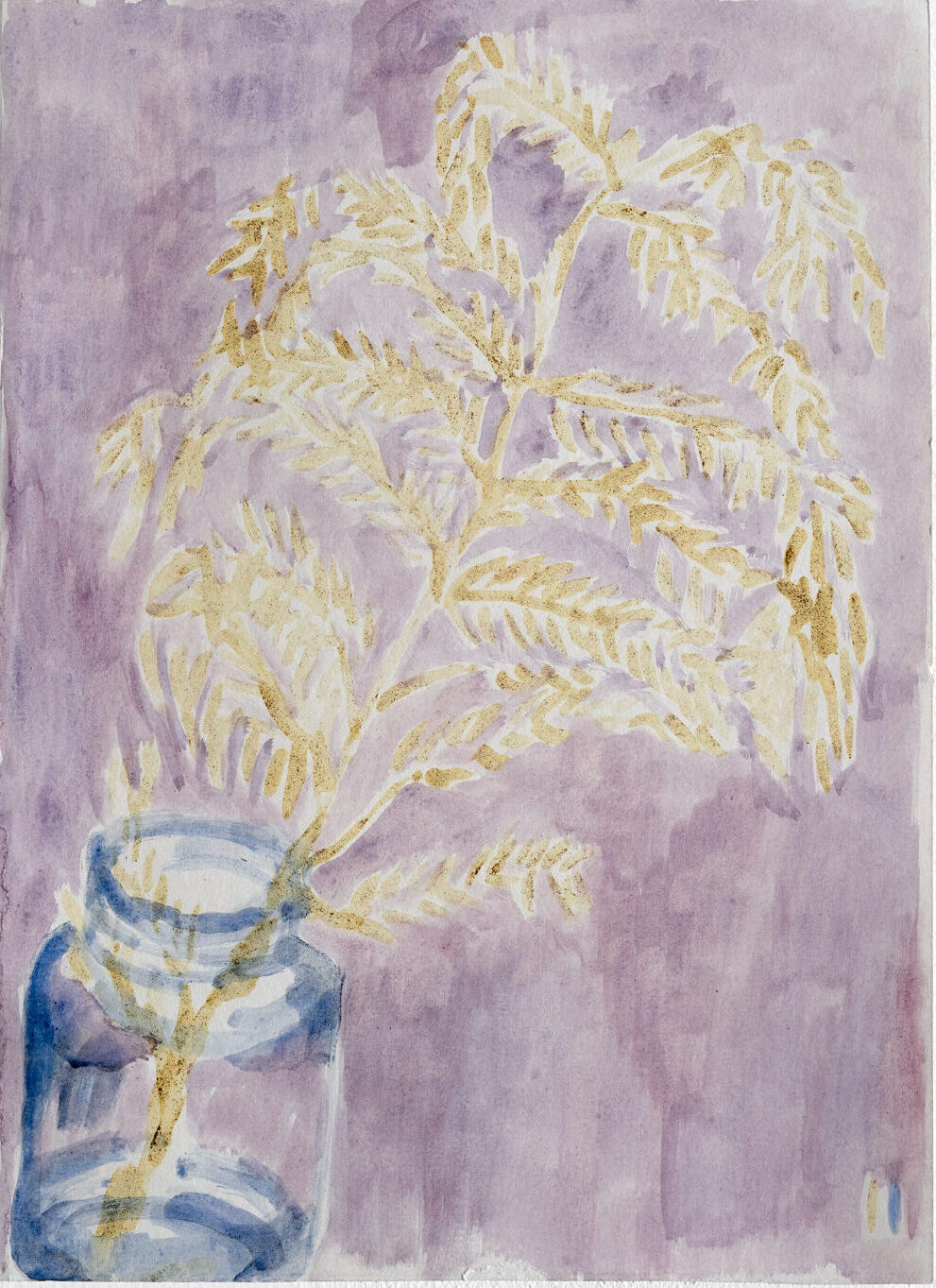
lembrança (jacarandá) egg tempera on paper, partly painted with pigments processed from jacaranda flowers, seeds of a jacaranda tree sewed in cotton 32,2 x 45,4 cm, 27,4 x 23,3 cm 2022
I collected flowers fallen from jacaranda trees in the streets of Lisbon and processed/transformed them into pigments. Their intense lila faded into green-brown as seen in the branch of the painting. The jacaranda tree keeps on sharing its own memory in a beautiful way- whenever it blooms. This happens in Portugal twice a year, in spring and in autumn- when it is spring in its land of origin, Brazil.

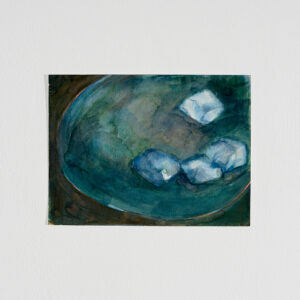

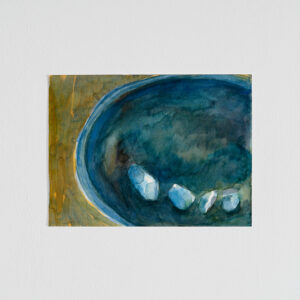
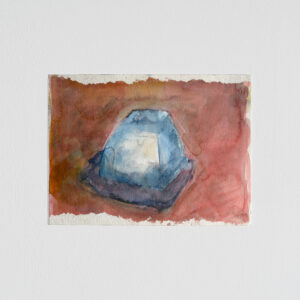
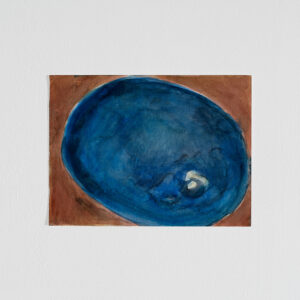
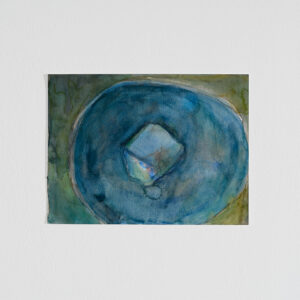
melting little ice cubes on a hot summer day
7 water paintings on paper
14,8 x 19,2 cm
2022
During a very hot summer day, I painted melting ice cubes on a plate. Due to the high temperature in my room, I had to work fast to freeze the cubes into images before they disappeared.
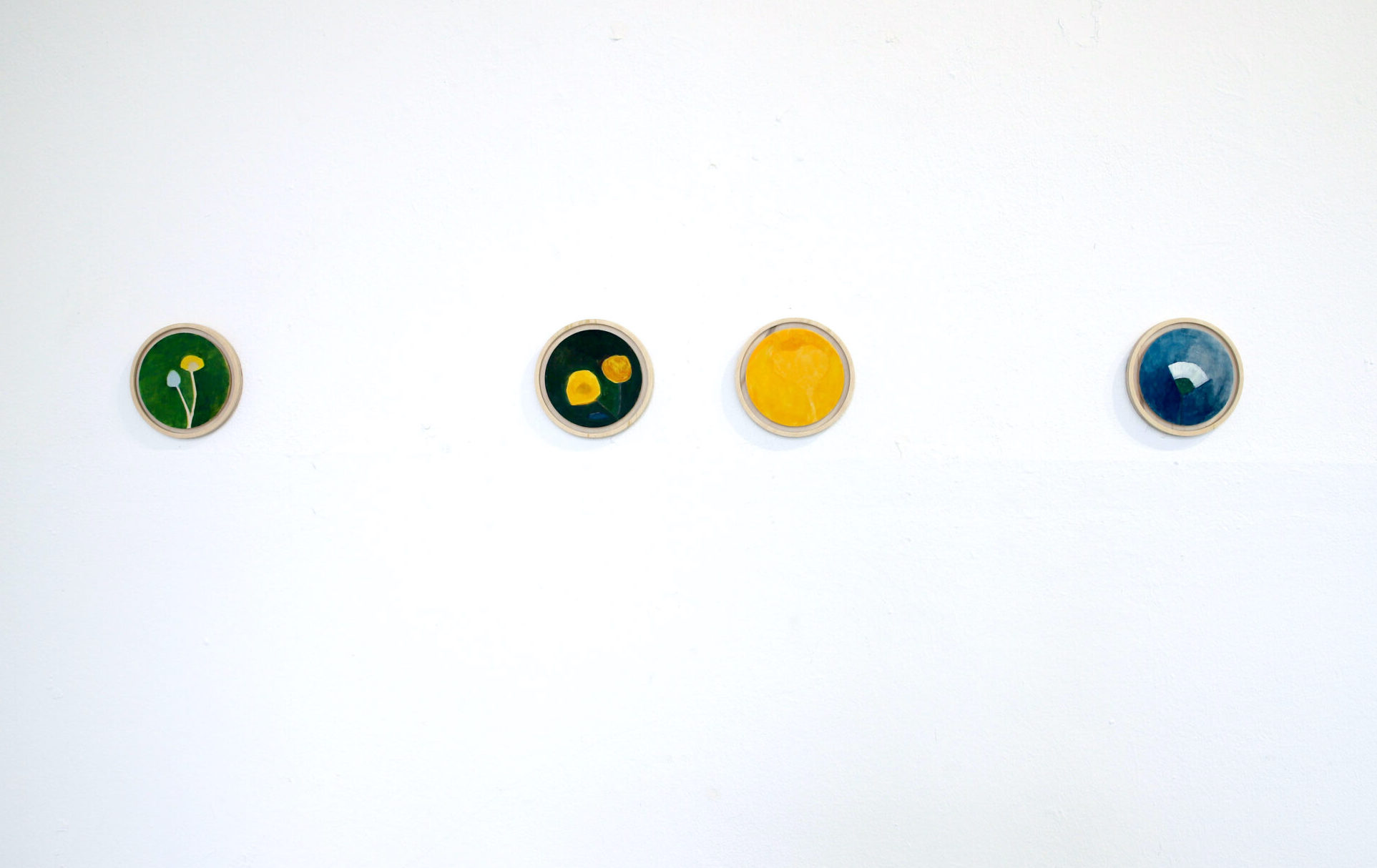
paula’s flowers (resonating with P. Modersohn-Becker)
Tempera on plywood
series of 18, 14 cm each
2019
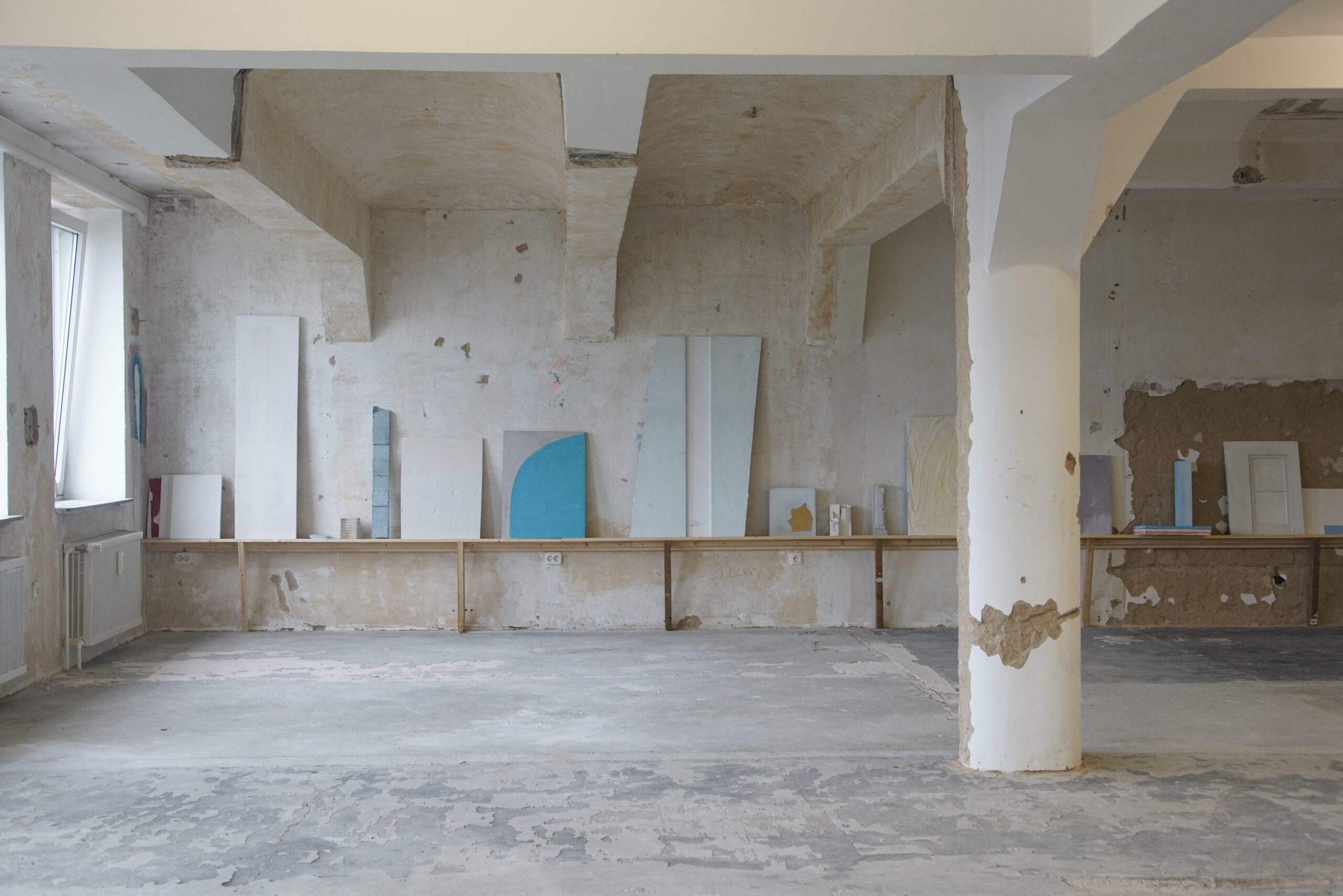
Farbtafeln
pigments, various materials in plaster on wood
various dimensions
2017

fly (tent)
Isolation fabric, thread
approx. 40 x 30 x 20 cm
2019